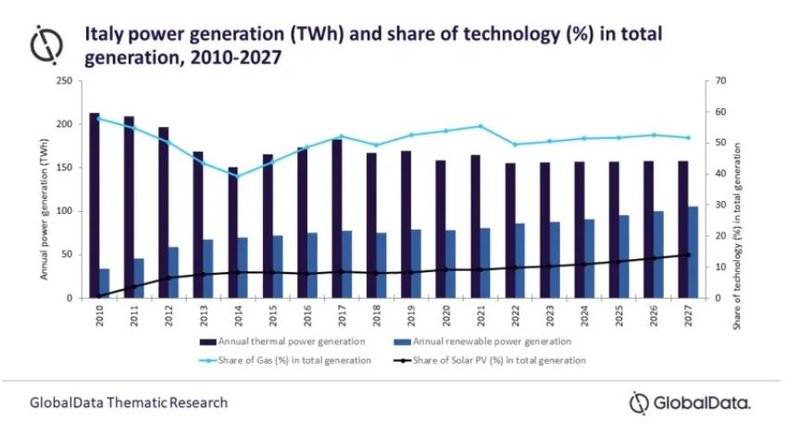Italian imports: Qatari gas only short-term solution to Italy’s Russian imports problem
Italy is one of the leading European economies and, along with Germany, France and the UK, has spearheaded economic growth in Europe.
One of GlobalData’s latest reports, ‘Italy Power Market Outlook to 2035, Update 2022 – Market Trends, Regulations and Competitive Landscape’, discusses the power market structure of Italy and provides historical and forecast numbers for capacity, generation and consumption up to 2035.
The recent Ukraine crisis has hugely dented the gas supply security of Italy. Nearly 40% of Italy’s gas imports are from Russia. While it will help prevent a power crisis, turning to Qatar is a very short-term solution, and the government will need to act fast to build renewable generation and modernise its grids to meet rising demand.
Imports account for more than 90% of Italy’s gas needs in 2021, sourcing largely from Southern Europe and Russia by pipeline across Ukraine.
Fossil fuel reliance
While Italy currently generates 47.4% of its energy from thermal power – coal, gas and oil – it does not possess substantial domestic fossil fuel reserves and heavily depends on imports. In fact, Italy imports the second-largest amount of gas in Europe, after Germany. Avoiding dependence on other countries is a long-term priority for Italian power, with the focus being on replacing thermal with solar.
Italy’s attempts to shed its reliance on gas will be a struggle, following an initial push in 2022. The country is expected to reduce its gas-based thermal generation percentage from 55.5% in 2021 to 49.5% in 2022, but then it is expected to remain around the 51.7% mark up to 2027.
The government has started to replace thermal power plants with renewable sources to meet rising energy demand and concerns over energy security but there is some work to do yet. However, wind and solar photovoltaic have made tremendous progress in the country, and these are set to play a major role in meeting the country’s power demand in the longer term. Conventional plants will still be present to take the baseload and manage fluctuations in supply.

// Credit: GlobalData
Storage as a solution
Focusing more on energy storage systems would be a good start, as well as modernising current grids and building biopower and offshore wind; most of the work so far has been onshore. However, it is noteworthy that, in the wake of the Ukraine crisis, state-controlled Terna revealed plans to spend $11bn (€10bn) over the next four years to upgrade the country’s power grid to meet energy security and climate change demands.
The key drivers of Italy’s GDP growth have been exports of apparels, metals and metal products, luxury vehicles and motorcycles, food, agricultural products and transportation equipment. However, GDP declined from $2.1tn in 2010 to $2.07tn in 2021, at a negative CAGR of -0.2%, as Italy’s economy took a major hit during the Covid-19 pandemic, with GDP declining by 8.9% in 2020 from 2019.
Backed by several funding programmes from the government and support from the EU, the economy stabilised, with the GDP growing by 3.4% in 2021 from 2020. GDP is expected to reach pre-pandemic levels between 2022 and 2023.
// Main image: The ENEL Tower. Credit: MikhailBerkut
Comment